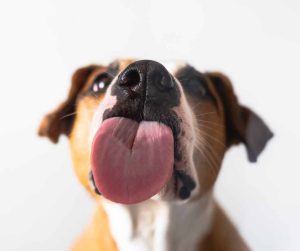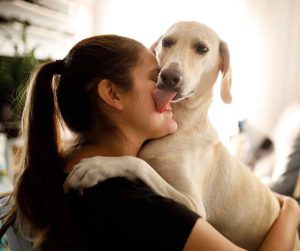From their unique anatomy to their various functions, canine tongues play a crucial role in the lives of our beloved furry companions. In this book, we will explore the many fascinating aspects of dog tongues, shedding light on their importance and providing valuable insights for dog owners and enthusiasts alike. So, let’s embark on a journey to discover the wonders of canine tongues and deepen our understanding of our four-legged friends.

The Surprising Functions of Canine Tongues
Table of Contents
From Taste to Communication
Dogs are known for their wagging tails, wet noses, and of course, their tongues. But did you know that canine tongues serves many more functions than just licking your face? In fact, a dog’s tongue is a complex and versatile organ that plays a crucial role in their daily lives. From taste to communication, a dog’s tongue is truly a remarkable part of their anatomy.
Tasting
First and foremost, a dog’s tongue is used for tasting. Just like humans, dogs have taste buds on their tongues that allow them to distinguish between different flavors. However, unlike humans who have around 9,000 taste buds, dogs only have around 1,700. This may seem like a small number, but it’s actually more than enough for them to enjoy their food. Dogs have a strong sense of taste and can differentiate between sweet, sour, salty, and bitter flavors. This is why they may turn their nose up at certain foods while eagerly devouring others.
Grooming
Canine tongues is not just used for tasting food. It also plays a crucial role in their grooming routine. Dogs use their tongues to clean themselves, just like cats do. They lick their fur to remove dirt, debris, and loose hair. This not only keeps them clean but also helps to distribute natural oils throughout their coat, keeping it healthy and shiny. In addition, a dog’s tongue is rough and acts as a natural brush, helping to remove any tangles or mats in their fur.
Regulate Body Temperature
Another surprising function of canine tongues is its ability to regulate body temperature. Dogs do not have sweat glands like humans do, so they rely on panting to cool down. When a dog pants, they are essentially using their tongue as a cooling system. As air is breathed in, it passes over their tongue, which is filled with blood vessels. The cooled blood circulates through the body, helping to regulate their temperature.This is why you may notice your dog panting heavily on a hot day or after exercise.
Communication
Aside from physical functions, a dog’s tongue also plays a crucial role in communication. Dogs use their tongues to communicate with other dogs and with humans. For example, a dog may lick their owner’s face as a sign of affection or to show submission. They may also lick other dogs as a way of greeting or to show respect. In addition, dogs use their tongues to communicate their emotions. A happy dog may have a relaxed, lolling tongue, while a stressed or anxious dog may have a tense, tightly curled tongue.
Social Bonding
A dog’s tongue is also used for social bonding. Puppies are born blind and deaf, so they rely on their sense of touch and taste to bond with their mother and littermates. They use their tongues to lick and nuzzle each other, creating a strong bond that will last a lifetime. This behavior continues into adulthood, as dogs use their tongues to show affection and strengthen their relationships with other dogs and humans.
Uncovering the Mysteries of Dog Licks: What They Really Mean and Why They Do It
Dogs are known for their unconditional love and loyalty towards their owners. They express their affection in various ways, from wagging their tails to cuddling up next to us. But one of the most common ways dogs show their love is through licking. We have all experienced those wet, slobbery kisses from our furry friends, but have you ever wondered what they really mean?
Firstly, let’s talk about the anatomy of a dog’s tongue. Dog tongues are quite different from human tongues. They are covered in tiny bumps called papillae, which give them a rough texture. These papillae serve a purpose beyond just helping dogs lap up water and food. They also contain taste buds, which allow dogs to taste and savor their food. Dogs often lick their lips after a meal, enjoying the flavors of their food.
Sign of Affection
Now, let’s delve into the reasons why dogs lick. The most obvious reason is that it is a form of communication. Dogs use their tongues to communicate with their owners and other dogs. When a dog licks you, it can mean a variety of things. It could be a sign of affection, as they are trying to show you that they love you. It could also be a way for them to seek attention or to show submission. In a pack, lower-ranking dogs will often lick the faces of higher-ranking dogs as a sign of respect and submission.

Marking Territory
But what about when dogs lick objects or surfaces? This behavior can have a few different meanings. Dogs have a keen sense of smell, and they use their tongues to gather more information about the objects they encounter. They may also lick objects to mark their territory, as their saliva contains pheromones that can leave a scent. Additionally, dogs may lick objects out of boredom or as a way to relieve stress or anxiety.
Submission
Now, let’s address the question that many dog owners have – why do dogs lick our faces? As mentioned earlier, licking is a form of communication for dogs. When they lick our faces, they are trying to communicate with us. It could be a sign of affection, as they are trying to show us that they love us. It could also be a way for them to gather information about us, as our faces have a lot of scent glands. Dogs may also lick our faces as a way to show submission, as they see us as their pack leaders.
In conclusion, dog licks may seem like a simple and straightforward behavior, but there is much more to it than meets the eye. Dogs use their tongues for a variety of reasons, from communication to grooming and even to gather information. So, the next time your furry friend gives you a slobbery kiss, remember that it is their way of showing love and affection towards you. And now, you have a better understanding of the mysteries behind dog licks.



2 comments
Great post Jacky. We rescued 2 dogs 4 years ago and the journey for them was long. Their previous owners were not the best.
I am enjoying your posts as they provide tips for us that we didn’t know. Lily is now 12 and her son Benny is 10
Ahh thanks Judy. I too have two rescued dogs. They still have some issues, but they are slowly starting to forget what they went through with the other family. You need to share some images with me!